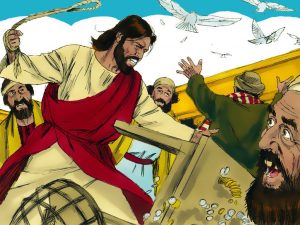Is the Temple Cleansing in John Accurate?

Critics claim that the temple cleansing in the Gospel of John is either the same temple cleansing reported by the three Synoptics, Matthew, Mark and Luke, or is out of place, therefore constituting a “contradiction” in the Gospels. Below are listed a number of reasons why the temple cleansing in John is accurate and was performed by Jesus around the time of the first Passover after his baptism, which was probably about six months earlier. John clearly states in John 20:31 and John 21:25 that he was highly selective in his reporting on the events of Jesus’ life. The other three Gospel writers had already reported on the second temple cleansing by the time John wrote his gospel. Upon close examination, it seems fairly obvious that John was very familiar with these other three Gospels, and quite possibly had copies of them in his possession as he wrote the fourth Gospel. John filled in many gaps that the Synoptics did not report on. In fact, 92% of his gospel is unique. John reports the following details about the first temple cleansing, that are omitted from the second temple cleansing recorded in Matthew, Mark, and Luke:
John 2:1 – “on the third day a wedding took place in Cana of Galilee.”
John 2:11 – “was the first of his signs”. John’s Gospel states that Jesus’ turning water into wine at a marriage feast was the first of the seven signs, or miracles, reported by John that Jesus performed prior to his death.
John 2:12 – “After this,” was when Jesus cleansed the Temple for the first time.
John 2:13 – “When it was almost time for the Jewish Passover, Jesus went up to Jerusalem.” This was Jesus’ first Passover that he attended after his baptism.
These significant differences in details between the Temple cleansing in John and the Temple cleansing in Matthew, Mark, and Luke, are strong evidence that these two cleansing occurred on two widely separated occasions in different years. Notice, also, how John places the Temple cleansing he records and the Temple cleansing recorded in Matthew, Mark, and Luke:
“Once more he visited Cana in Galilee where he had turned the water into wine . . . This was the second sign Jesus performed after coming from Judea to Galilee (John 4:46,54 NIV). John’s gospel records the first two of Jesus’ many miracles that are recorded in the Bible. Jesus’ first Temple cleansing is thus placed before Jesus’ second miracle, which was still early in his ministry. This miracle, or sign, that is, the healing of the government officials son (John 4:46-53), is stated by John to be number two of the seven signs, or miracles, that he reports in his gospel. This fact is conclusive, in itself, that John’s temple cleansing took place about three years prior to the second temple cleansing, which is reported by the Synoptics, Matthew, Mark and Luke. The reason we know this is that John reports three more passovers prior to Jesus’ death (John 5:1; 6:4; 13:1). By the time of Jesus’ second temple cleansing, he had performed numerous miracles as reported in the four Gospels.
The following are unique to John’s recording of Jesus’ first Temple cleansing, as contrasted with the Synoptics recording of Jesus’ second Temple cleansing:
· John 2:14 – “people selling cattle and sheep”
· John 2:15 – “whip out of cords”
· John 2:15 – “he scattered the coins of the money changers”
· John 2:16 – “To those who sold the doves he said, ‘Get these out of here.'”
· John 2:17 – “His disciples remembered that it is written: ‘Zeal for your house will consume me.'”
John does not report Jesus’ quotation of Isaiah 56:7, that is recorded by the synoptics (Matthew 21:13; Mark 11:17; Luke 19:46). There are major differences in wording, setting and time. Apart from the work of John the Baptizer, nothing in John 1-5 is in the synoptic Gospels.
This temple cleansing occurred at the first Passover of Jesus’ ministry, and the synoptic Gospels’ cleansing took place at Jesus’ last Passover.
Those who claim to have found “contradictions” in the Bible have really not checked closely to get all the details. When one does analyze all the details, these so-called “contradictions” vanish. Different independent, honest, factual witnesses never have 100% identical reports. .However, they are always accurate when reporting the main facts, or events, but their details are always divergent, depending on their various perspectives. These divergent, but accurate, details are a clue that the gospels are accurate, not fabrications.